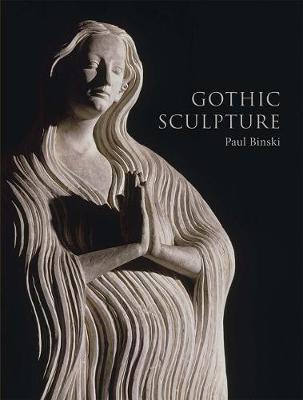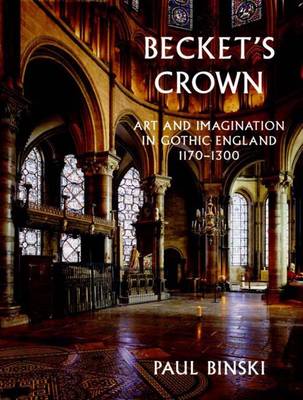The Paul Mellon Centre for Studies in British Art
3 total works
In this beautifully illustrated study, Paul Binski offers a new account of sculpture in England and northwestern Europe between c. 1000 and 1500, examining Romanesque and Gothic art as a form of persuasion. Binski applies rhetorical analysis to a wide variety of stone and wood sculpture from such places as Wells, Westminster, Compostela, Reims, Chartres, and Naumberg. He argues that medieval sculpture not only conveyed information but also created experiences for the subjects who formed its audience. Without rejecting the intellectual ambitions of Gothic art, Binski suggests that surface effects, ornament, color, variety, and discord served a variety of purposes. In a critique of recent affective and materialist accounts of sculpture and allied arts, he proposes that all materials are shaped by human intentionality and artifice, and have a “poetic.” Exploring the imagery of growth, change, and decay, as well as the powers of fear and pleasure, Binski allows us to use the language and ideas of the Middle Ages in the close reading of artifacts.
Published in association with the Paul Mellon Centre for Studies in British Art
Published in association with the Paul Mellon Centre for Studies in British Art
To appreciate England's earliest Gothic buildings and art - the great cathedrals at Canterbury, Lincoln, Salisbury, and Wells and contemporary Gothic texts and images - it is necessary to understand the religious and ethical ideals of the individuals and communities who sponsored them. Paul Binski's fascinating new book offers a radical new perspective on English art, architecture, social formation, and religious imagination during this pivotal period. Binski reveals that the Church, although authoritarian and undergoing reform, was able to come to terms with new developments in society and technology as well as with the fact of social and religious diversity. He explains how varying ideals of personal sanctity were bound up with radical new notions of leadership, personal ethics, and styles of religious devotion and how ideas of reform of worship, personal conduct, and art impacted on the community at large.
One of the great royal treasure houses of the world, Westminster Abbey is an example of English medieval royal power and patronage. This text presents a study of Westminster Abbey and places the abbey's physical and artistic growth in the context of the political and religious culture of its time. Paul Binski challenges the predominant view that the abbey represented an international Parisian Court style that was a product of the rivalry between Henry III of England and Louis IX of France. Instead, re-examining the diverse character of high political patronage, he relates the abbey more closely to the myths and aspirations of English political culture. He reassesses the work of the major patrons associated with the abbey, especially Henry III, Edward I, and Richard II, and analyzes the various ideologies of power they sought to promote, particularly the cult of St Edward. The text shows how the royal mythology of nations - including Italy - influenced the development of the abbey.
It also shows discusses the function of the abbey as the single most important site of royal burial and ritual, describing its tombs, its coronation ceremonies and its services to the nearby Palace of Westminster. Documenting and examining the abbey's collection of paintings, sculptures and illuminations, it relates them to the church's ritual and devotional practices.
It also shows discusses the function of the abbey as the single most important site of royal burial and ritual, describing its tombs, its coronation ceremonies and its services to the nearby Palace of Westminster. Documenting and examining the abbey's collection of paintings, sculptures and illuminations, it relates them to the church's ritual and devotional practices.


